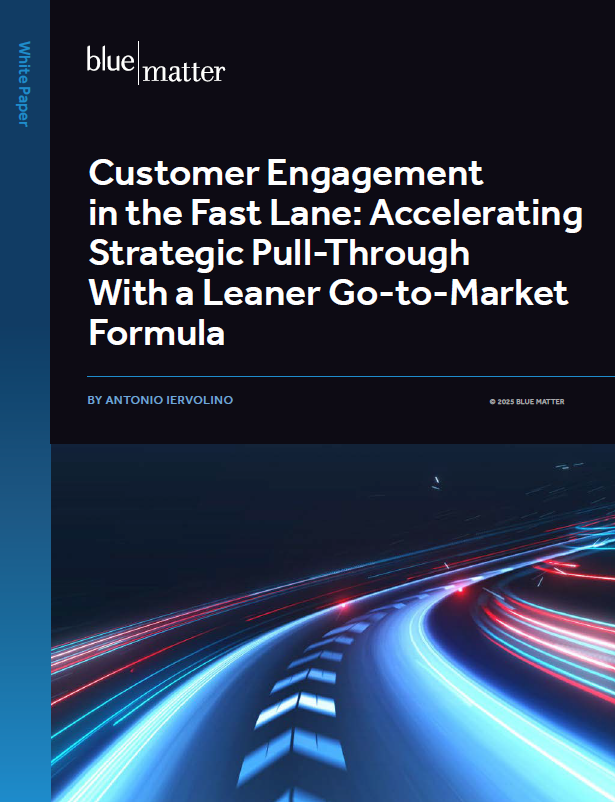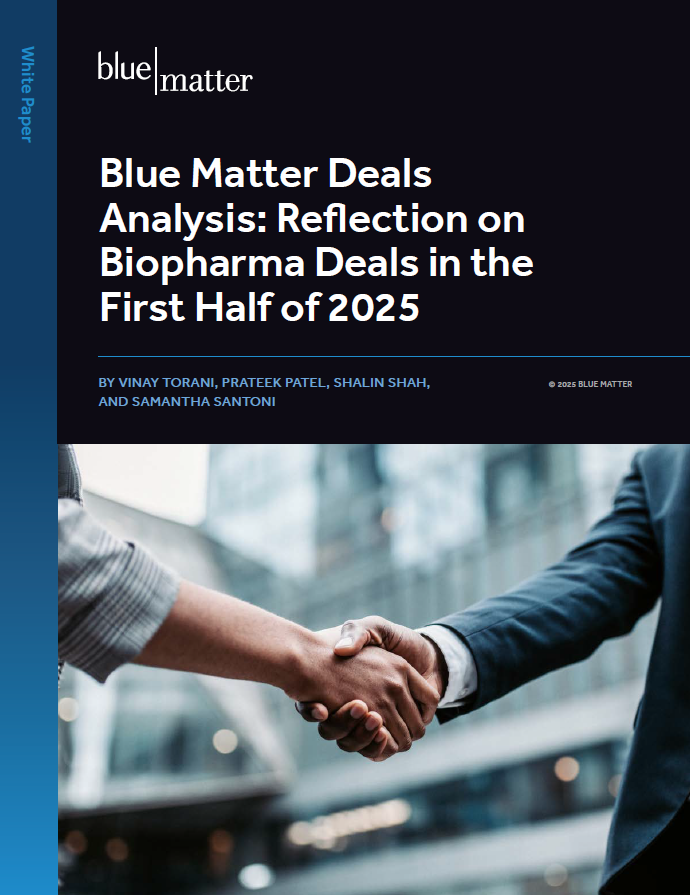
When a biopharma company develops a new therapy, it’s not satisfied with simply getting market authorization in key geographies. Rather, a company wants to ensure broad, sustainable access and safe, confident use by healthcare providers (HCPs) that supports improved patient outcomes.
To achieve these goals, it must consider the needs of a complex healthcare ecosystem that includes regulators, clinicians, payers, patients, and others. Randomized controlled trials (RCTs) often help meet some of those needs, as they are primarily designed to clear initial hurdles and support market approval. They can incorporate elements to help bolster key value propositions for payers and other stakeholders, but they’re always limited by various constraints, such as length, the outcomes measured, the limited patient population, etc. In short, they’re not enough to meet all evidence needs.
Those needs can and must be filled in a timely fashion to maximize a therapy’s positive impact across geographies and throughout the life cycle. The Medical Affairs (MA) function has a critical role to play in generating evidence, and that role is becoming more important and strategic with each passing day. In this article—which is part III in an ongoing series—we explore why MA is becoming the central hub for evidence generation. We also provide some high-level guidelines for MA teams working to maximize their impact in this area.
For readers interested in the previous articles in this series:
- Part I outlines the drivers of MA’s ongoing evolution from a supporting function to a highly strategic resource.
- Part II focuses on MA’s changing role as an insight generator.
Why Evidence is Becoming Even More Important
Evidence can come in many forms and be generated by different functions within the biopharma enterprise. For example, phase IIIb / IV studies, investigator sponsored trials (ISTs), real world evidence (RWE), and exploratory data analysis from existing primary sources can be used to support a range of needs.
This evidence can give us a far more complete understanding of how a product can improve patients’ lives, their experiences with the therapy, its effectiveness, safety profile, and its value across a range of patient sub-populations. In addition, it can be an important tool for informing clinical development plans by (for example) conducting signal-seeking studies with new combinations or in new treatment settings. Evidence is key to learning how patient outcomes can be improved. Ultimately, it can provide a much deeper understanding than highly structured RCTs.
To illustrate why evidence is so important, it’s useful to consider how various stakeholders are leveraging it in today’s healthcare ecosystem.
Regulators
Regulators and health authorities are beginning to consider evidence beyond RCTs. A key reason is the increasing frequency of expedited approval processes, including Accelerated Approval, Fast Track, and Priority Review. In many cases, regulators require ongoing evidence generation following an accelerated approval.
This trend has developed over time. A recent study showed that nearly 81% of new drug approvals between 1995 and 1997 were supported by at least two pivotal clinical trials. Between 2015 and 2017, that number had dropped to about 53%. More recently, in 2021, 18 of 50 drugs (36%) approved by the US FDA Center for Drug Evaluation and Research (CDER) used Fast Track Status, a slight increase over recent years. 14 of 50 (28%) used an Accelerated Approval pathway, a significant increase over the previous year, and a continuation of a very steep rise over the past four years.
As new products come to market with less data to back them up, the demand for additional evidence over time increases. Companies must generate that evidence to support access, continued utilization, and demonstrate patient benefit.
Payers
Payers must make complex decisions and trade-offs when considering reimbursement of new treatments. Their needs and priorities vary across markets, and the data generated by RCTs will not be enough to satisfy all their requirements. For example, the UK’s National Health Service places a high priority on the cost-effectiveness of a therapy. In contrast, Germany is very focused on how a therapy compares to the current standard of care. Plus, they strongly consider patient reported outcomes when making reimbursement decisions. Evidence generation (beyond RCTs) is required to address these needs.
Clinicians & the Scientific Community
In many cases, clinicians have a plethora of options available to treat a given disease. This is especially true in some oncology indications, and selecting the right one can become quite confusing. In these situations, physicians require more nuanced evidence to guide treatment decisions, identify the right treatment for the right patient, and guide the optimal sequencing of treatments. On the “flip side” of this, ongoing evidence generation can help solidify physicians’ knowledge and confidence regarding a therapy’s impact in a rare disease, which may have been approved on the basis of limited clinical trial data.
It’s also important to ensure that clinicians have the evidence they need to make them comfortable integrating a new therapy into their clinical practice. Related to this, ongoing evidence can educate clinicians on the optimal treatment duration, and safe use in patients not included in RCTs, amongst other purposes.
Patients
Patient-centricity has become a big focus for biopharma companies (and other stakeholders) over the past few years. Companies are being increasingly proactive about uncovering patient needs and building solutions to meet them. The key goal is to improve patient outcomes while optimizing the patient’s experience with a product. Evidence generation can play an important role here. As mentioned, patient reported outcomes can be pivotal as some payers assess access to treatments. Also, many EU states engage with patient groups as part of the health technology assessment (HTA) process.
Related to all of the stakeholders above, a forward looking approach to evidence generation is also a key to helping a company maintain a competitive edge. In highly competitive market spaces, companies would be well-served by assessing the competitive landscape in detail to understand what evidence will help them build or maintain a competitive advantage in the longer term (e.g., related to novel combinations, broader patient populations, and so on).
Evidence in Action
Below, we provide a few examples of how evidence is being used in innovative ways to improve patient care and advance clinical knowledge:
- Biogen and Imperial College London have collaborated to develop Optimise MS, which links users to a range of open-access tools for collecting real-world patient data for Multiple Sclerosis (MS). The goal is to encourage neurologists to record comprehensive, standardized data on their patients which can then be de-identified and shared with other clinicians and researchers. Ultimately, the Optimise MS team wants to advance our understanding of MS and improve patient care and outcomes.
- Also focused on MS, Roche’s Floodlight smartphone app is designed to capture information that gives patients and their physicians a much better view of the patient’s disease. It collects some data passively while sitting in the patient’s pocket. However, the patient can actively generate data by completing various activities and journal entries. The app not only helps individual patients, but also advances MS care overall by contributing data to a de-identified database that is open to researchers, drug developers, and scientists.
- In an effort to optimize patient care for a range of chronic conditions, AstraZeneca developed the AMAZE disease management platform. The platform captures relevant clinical information through connected devices. It supports quality of life measures and patient reported outcomes (PROs) to provide an end-to-end digital solution connecting patients and providers. Health care providers are able to see data on patient health progress and communicate directly with patients through the platform. Two clinical studies conducted in collaboration with leading US academic medical centers have focused on improving patient care, improving clinical outcomes, and reducing healthcare costs. Building on the initial success of the platform, AstraZeneca recently sold AMAZE to Huma to bring the platform to a broader range of patients.
- In 2019, the US FDA demonstrated another use for real-world data (RWD) when it approved a new indication for Pfizer’s Ibrance (palbociclib) in combination with an aromatase inhibitor or fulvestrant to include men with certain types of metastatic breast cancer. The approval was based on RWD from electronic health records and post-marketing reports in male patients.
Medical Affairs as the Central, Strategic Hub for Evidence
Historically, the generation, use, and dissemination of evidence has been decentralized and somewhat disjointed, causing inefficiencies and reducing its potential value. With so many functions in a biopharma company generating evidence for various purposes, the “left hand often does not know what the right hand is doing” because consistent coordination is typically lacking. Interestingly, the questions those functions are trying to answer often overlap.
Unfortunately, the data are rarely integrated in a meaningful way to give a holistic picture of the product and the patient. The current environment practically cries out for a champion who can help coordinate evidence generation efforts within a biopharma company, ensuring that the various stakeholders get what they need while streamlining the system and wringing inefficiencies out of it.
Medical Affairs is ideally suited to become that champion. It’s in the unique position to untie these data sources because it touches so many other functions and has the scientific and medical knowledge to identify meaningful insights from the data. Nevertheless, Medical Affairs’ functional evolution is moving towards this central role, and it should fulfill that role starting early in the product life cycle.
High-Level Guidelines for Medical Affairs
As Medical Affairs teams increasingly take on the task of integrating evidence planning and generation, there are a few core tenets to keep in mind. Their efforts should be:
Collaborative – While integrated evidence generation and planning should be led by Medical Affairs, it must be done in close collaboration with other key stakeholders who will need to leverage the data and insights. These include Clinical Development, Regulatory Affairs, Marketing and other commercial functions, Market Access, and Market / Strategic Planning.
Geographically Diverse – The effort should include representation from both global and regional and local partners to ensure that payer and provider needs are addressed across geographies.
Continuous – Evidence will be needed in one form or another across the entire product life cycle. So, evidence generation should be an ongoing process that enables teams to identify, track, and address near-term and long-term evidence needs. An integrated evidence generation plan should not be considered a “one and done” document. Instead, it should be a “living” document that’s regularly updated to reflect the latest changes in the internal and external landscapes, as well as changing evidence requirements and tactics. Key uses for evidence at various stages in the life cycle include:
- Early development – Understand patient unmet needs and identify areas of opportunity
- Late development – Establish clinical and economic benchmarks of the current clinical approach, and support future comparative studies post-approval
- Launch – Ensure appropriate reimbursement and uptake at launch
- Post-approval – Expand access based on phase IIIb/IV, RWE or registry data; Leverage ISTs and exploratory studies to identify potential value in new populations
Insight-Based – This requires an in-depth understanding of evolving stakeholder evidence needs, and the expected impact of evidence generation activities. As we mentioned in our previous article, Medical Affairs teams might want to consider developing a dedicated Insights group to properly “mine” the available data for useful insights.
Strategic – Activities should be prioritized to align with the overall molecule and/or disease area strategy.
The need for integrated evidence planning and management is becoming more obvious. A well-designed system will more efficiently and effectively generate evidence to support access, optimize utilization, and maximize the positive impact for patients.
Up Next
As we’ve mentioned throughout this series, the evolving landscape is significantly boosting the Medical Affairs function’s strategic profile and enhancing its potential strategic value. At the same time, it’s placing more demands on MA to deliver that value. In our next installment, we’ll explore Medical Affairs’ changing role in strategy development.







